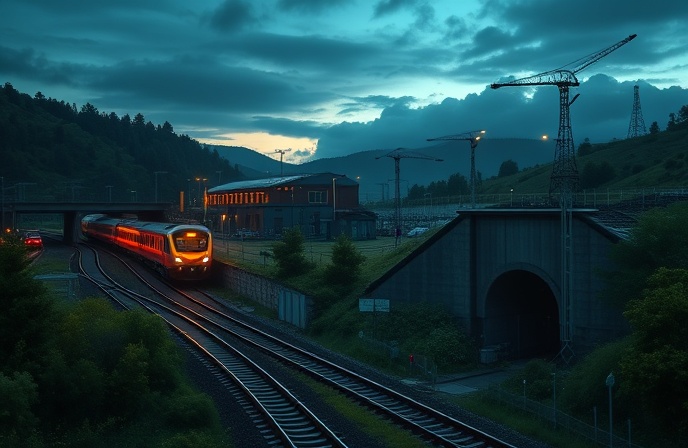Scotland’s Rail Storm Chaos: Isha, Jocelyn & ScotRail’s Response

Introduction
This article analyzes the significant disruption to Scotland’s railway network caused by consecutive severe storms, Storms Isha and Jocelyn, in January 2024. The unprecedented scale of the service cancellations imposed by ScotRail, the publicly owned train operating company (TOC), highlights the vulnerability of railway infrastructure to extreme weather events. We will examine the immediate impact of the storms, the resulting operational challenges faced by ScotRail, the broader implications for railway safety and passenger travel across the UK, and the potential for future improvements in infrastructure resilience and storm preparedness. This analysis considers factors ranging from the immediate response and decision-making processes of ScotRail, to the long-term implications for investment in railway infrastructure and the adoption of more resilient design and operational strategies. The focus will be on the interplay between extreme weather, operational response, and the need for proactive planning to mitigate future disruptions.
Storm-Related Disruptions and ScotRail’s Response
Storm Isha caused widespread damage to the Scottish railway network, felling trees and depositing debris across tracks, resulting in significant service delays and cancellations. Before the arrival of Storm Jocelyn, ScotRail proactively took the unprecedented step of suspending all services from 7pm on Tuesday, January 23rd. This preemptive measure, while disruptive, prioritized passenger and staff safety. The decision reflects a recognition of the potential for further damage and the difficulties of operating trains safely in high winds and heavy rain. The scale of the decision, involving a complete network shutdown, underscores the severity of the weather forecast and the potential risks involved in attempting to maintain limited service.
Impact on Passengers and Network-Wide Consequences
The complete shutdown of the ScotRail network had widespread repercussions for passengers, causing significant travel disruption. The timing of the cancellation, during the evening rush hour, compounded the difficulties faced by commuters and travelers. Further disruptions extended to Wednesday, January 24th, as track inspections were needed to ensure the safety of the lines before services could resume. The impact was not confined to Scotland. Other TOCs (Train Operating Companies), such as LNER (London North Eastern Railway) and Avanti West Coast, also experienced service limitations and advised passengers against travel in affected areas. The sheer number of inquiries received by ScotRail, almost double the previous Monday’s volume, illustrates the public anxiety and uncertainty caused by the disruption.
Infrastructure Vulnerability and Resilience
The storms highlighted the vulnerability of railway infrastructure to extreme weather events. While the wind speeds during Storm Jocelyn were slightly lower than those experienced during Storm Isha, the cumulative effect of consecutive storms and the pre-existing damage exacerbated the problems. The events underscore the need for ongoing investment in robust infrastructure, including enhanced tree management along railway lines, improved drainage systems to reduce the risk of flooding, and potentially, the implementation of more resilient overhead line equipment (OLE) designs. Furthermore, the development of improved forecasting models and early warning systems could aid in more effective and timely responses to severe weather.
Conclusions
The complete shutdown of the ScotRail network due to Storms Isha and Jocelyn serves as a stark reminder of the vulnerability of railway systems to extreme weather. ScotRail’s decision to preemptively halt all services, while disruptive, prioritized safety and provided clarity for passengers. However, the extensive disruption underscores the urgent need for strategic investment in infrastructure resilience. This includes not only improving physical infrastructure – such as enhanced tree management, improved drainage, and robust OLE designs – but also enhancing forecasting capabilities and developing more sophisticated early warning systems. Furthermore, the incident highlights the interconnectedness of the UK rail network; disruptions in one region can have cascading effects on services across the country. Future planning and investment must consider the cumulative impact of extreme weather events and incorporate strategies to minimize disruption and maximize the safety of both passengers and railway staff. The need for robust contingency plans, effective communication strategies, and a commitment to continuous improvement in infrastructure design and maintenance are paramount for ensuring the reliability and safety of the UK’s railway system in the face of increasingly frequent and severe weather events. The integration of advanced technologies, such as centralized train control systems (CTC) and predictive maintenance, can also play a vital role in mitigating future disruptions and enhancing the overall resilience of the railway network. Ultimately, learning from these events is crucial to building a more robust and resilient railway system for the future.






